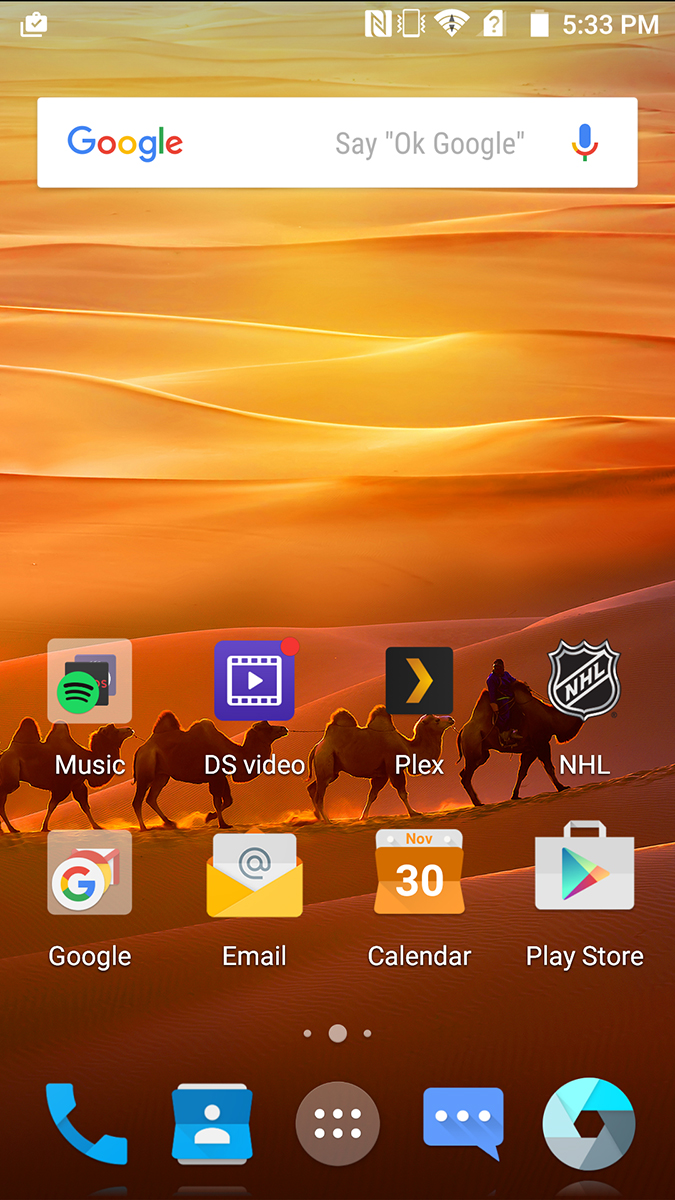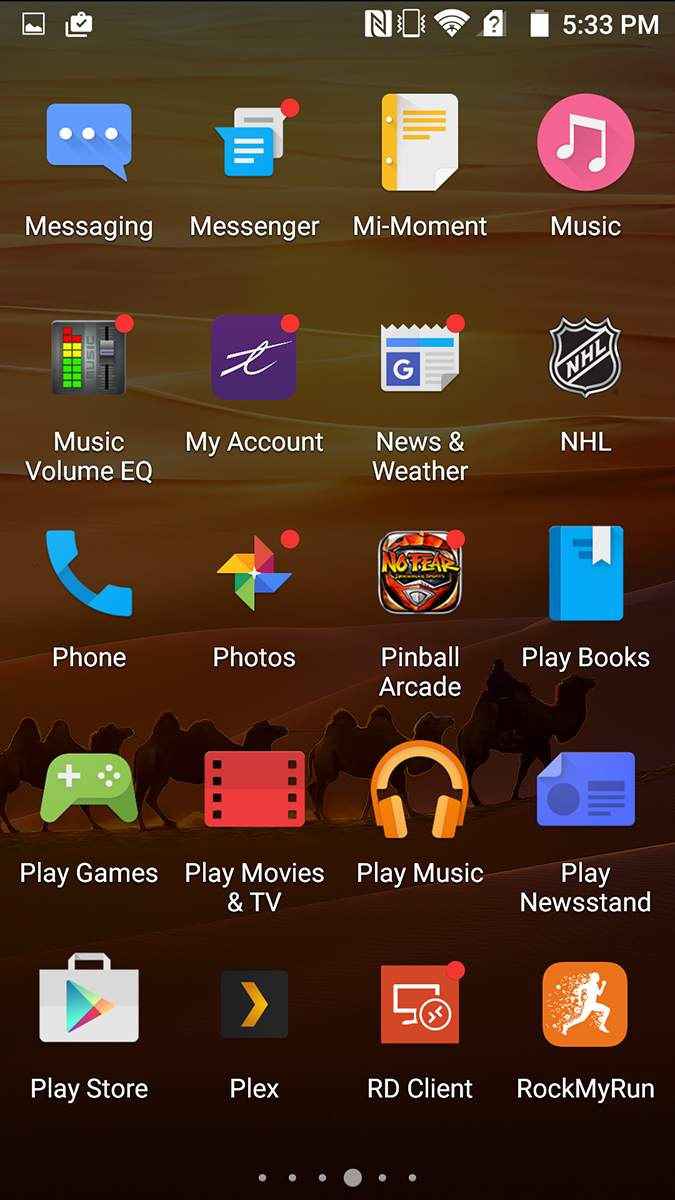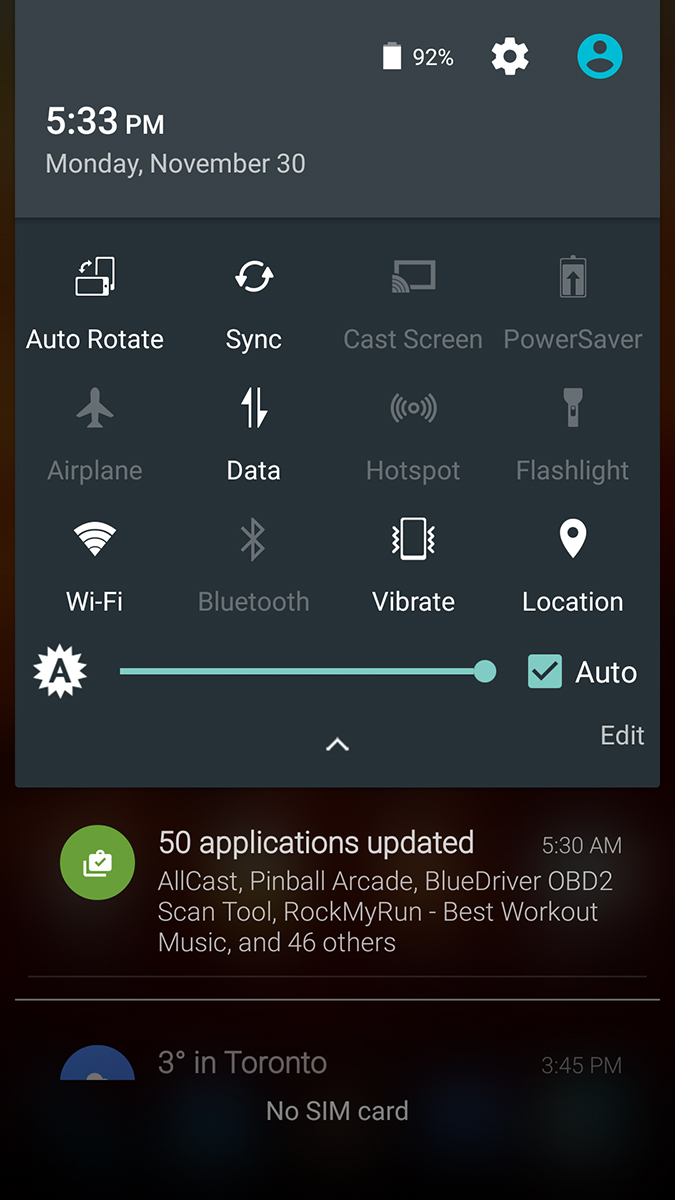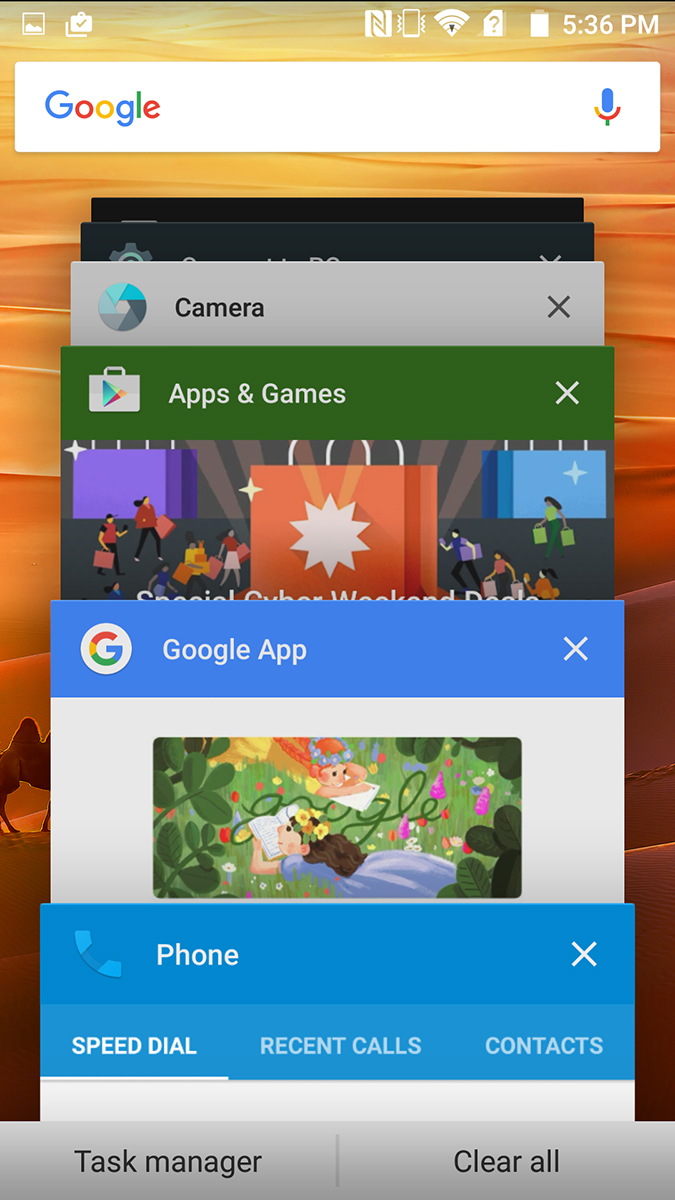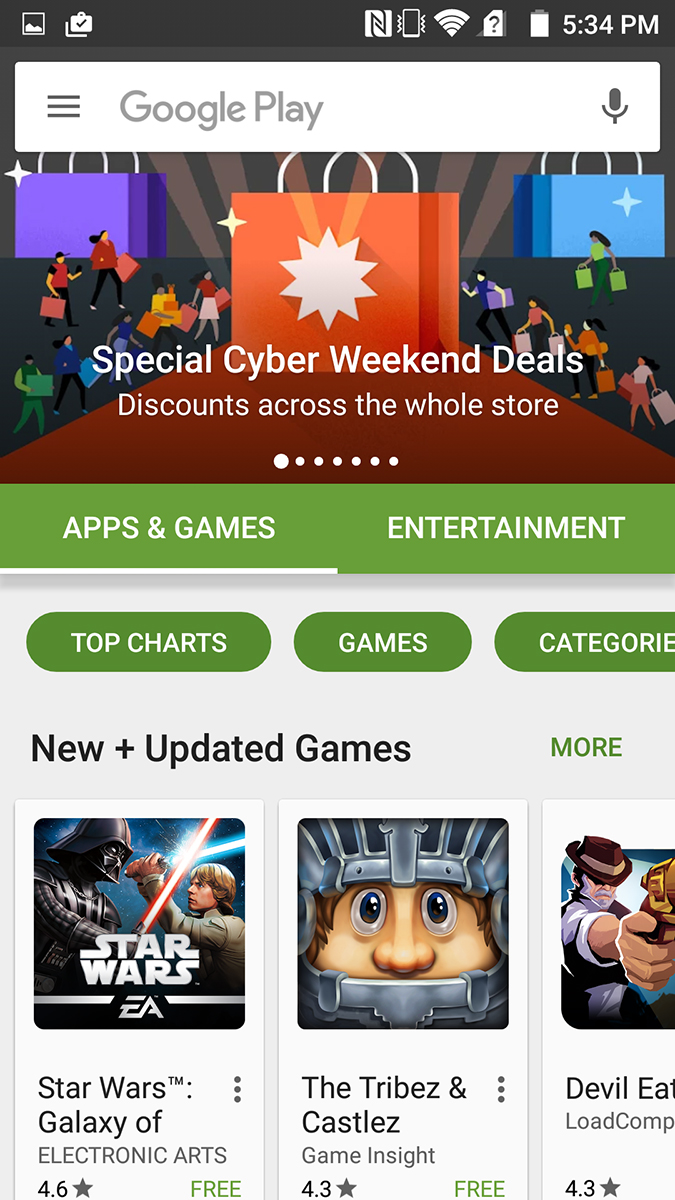
- Solid build with aluminum back
- Android mostly untouched
- Dual-lens camera
- Excellent audio
- Well priced
- Available unlocked, without a contract
- No expandable storage
- Second rear lens underused
- Performance could be greater
China’s smartphone makers are on the march, it seems. With Huawei likely to benefit from its partnership with Google on the Nexus 6P, ZTE, another Chinese manufacturer, is looking to set its own path to get noticed. The Axon range is a new smartphone family of devices, which the company hopes will truly put it on the map internationally, at least with more budget-conscious consumers.
Meet the Axon, a watered-down version of the Axon Pro (itself a slightly watered-down Axon Elite, available internationally), which is the most complete smartphone the company has brought to market on this side of the Pacific yet. Stripping away speed and features rarely makes for a good phone, so what’s the mid-range Axon like to live with? We find out.
Laying the axe down
The most immediate thing you notice about the Axon is the use of aluminum in the body. For a company more amenable to using plastic in the past, this is a pretty major shift in direction. And it’s a crafty one because the metal largely makes up the back, while the rest of the body is still plastic. The strips at the top and bottom on the back panel are primarily there to let the antennas pass through, which they otherwise couldn’t do through a metallic frame.
The edges are also made of plastic, as are the slivers housing the speakers above and below the 5.5-inch 1080p display (with 401ppi). These aren’t stereo speakers, and only the bottom one makes any loud noises, while the one above is only for calls. The power button and hardware camera shutter release are on the right, the volume rockers on the left, a headphone jack up top, and micro-USB connector is at the bottom. The Gorilla Glass 3 display also has a circular home button underneath it.
Unfortunately, the trade-off with this design means ZTE has sacrificed a removable battery and expandable storage. What a shame it hasn’t implemented the dual-SIM system from the Axon Elite, where one SIM tray can double as a MicroSD card slot.
The extra room inside may have an upside, as the Axon has the same dual-lens camera used on the Axon Pro and Axon Elite. The main 13 megapixel lens is coupled with a 2-megapixel lens for depth-of-field or bokeh effects, so generating this cool effect isn’t solely down to some clever software. The front has an 8 megapixel wide-angle lens for an easier time shooting selfies with more people or more background behind you.
The Axon runs on a Snapdragon 801 quad-core processor with a clock speed of 2.3GHz. There’s 2GB of RAM and 32GB of internal storage. The 3,000mAh battery is sizeable for a device this size, though still stays far back from a comparable phone like the Moto X Play and its massive 3,630mAh battery. A Hi-Fi amp has also been included to give audio a sonic boost, no matter what’s playing. To further the point, ZTE includes decent JBL earbuds in the box. Congratulations ZTE, we can’t remember the last time anyone included buds that were actually worth wearing, including Apple’s terrible pair.
- 1. ZTE Axon
Contrast all that with the Axon Pro, which runs on a Snapdragon 810 octa-core processor, 4GB of
The phone supports 4G LTE on the AT&T and T-Mobile networks, and is unlocked, so there’s no need to sign with a carrier to get it.
Trimming the bloat
A reasonable concern with any mid-range handset is the degree of bloatware that might be crammed into it. ZTE was smart in opting not to mess with Android too much, and kept its paws off the homescreen and app tray as much as possible.
For $330 unlocked, it’s hard to argue with the Axon.
The keyboard is not standard Lollipop, and uses a predictive text engine that can be both a blessing and curse at once. Since installing a third-party one is so easy, this doesn’t have to be a drawback that hinders the device in any significant way. The phone can run Swype or SwiftKey without a problem.
The Axon has
Yes, there are some specifics unique to the phone, like the various media apps (music, gallery and video player), but they can easily be supplanted by Google’s or anyone else’s. The nice thing about the lack of pre-loaded apps is that there is less chipping away at the internal storage. When there’s no memory card slot to rely on, every gigabyte counts.
None of this would have mattered if
Performing under pressure
What confirms the Axon’s mid-range credentials is the fact it gets hot under pressure. Under regular, low-intensity usage, the phone pretty much sips the battery, keeping it going for longer. Once it needs to handle something more demanding, the phone’s temperature goes up and the battery level tumbles.
After a while, this turns into a predictable pattern. The Axon, despite having a good set of specs that can easily handle many tasks, seems like its software needs some optimization. Granted, the battery drain is in line with how hard the phone has to work. Playing Angry Birds and checking email on a subway ride isn’t going to chug juice from the battery, whereas playing Call of Duty and streaming music certainly will.
That’s true of any phone, though the Axon’s tendency to take more than it probably needs is something ZTE will have to rectify with a software update, if possible.
The good news is that the rest of the performance picture is pretty solid. The amplified headphone jack does add up to a superior audio experience, probably the best I’ve heard in a phone at this price point. The built-in digital-to-analog converter (DAC) just works on its own, rather than requiring you to flip a switch to get it going. It also works on anything you’re listening to, so not only is it louder, but also clearer. The effect is better appreciated when the music source is better than standard.
Call quality also benefits from the built-in DAC, especially when using headphones. Callers came in louder, though clarity had more to do with cellular reception than anything the DAC could do.
A decent camera
The camera offers a lot on paper, thereby raising expectations. Shooting with the Axon is made easier by the fact there’s a physical shutter release button on the side, which also quickly opens the camera app when double-pressed.
The dual-lens setup in the rear is only used for bokeh shots. HTC tried this with the One M8 before abandoning it with the One M9 this year. The feature wasn’t bad with that phone, and it’s not bad here, either. Much like in that instance, the lenses each take the same shot, allowing you to adjust the focus after the fact to increase or decrease the blurring effect. Because a second lens is used, adjusting the blur is more limited to the parts of the image that aren’t already blurry from the optics used. This leads to a more natural-looking DSLR-like depth-of-field, but the software trickery involved can’t fully emulate it.
Shooting in manual mode, I could have benefitted from having the second
What’s unfortunate is that the second lens lays dormant most of the time. Shooting in manual mode, I could have benefitted from having the second lens kick in and help drown out the background. Instead, I had to move closer to the subject and see what I could get naturally.
What I found frustrating to deal with at times was the interface. Adjusting the shutter bordered on ridiculous, using a lateral slider that didn’t always register a swipe in either direction. The main manual settings were also too low on the screen, making me contort my thumb to be able to switch what I needed to.
For a camera with a very wide f/1.8 aperture and optical image stabilization (OIS), I expected really good low-light shots. The results were adequate, but not what I was hoping for. The shutter speed skews too dark, which doesn’t make sense when so much light is coming in through the wider aperture. By going a few steps lower on the shutter, night shots wouldn’t come out as dark.
I can’t tell if this was a safe play by ZTE to avoid really noisy images, but in any case, the results are nowhere near what the
It’s not all bad though. Low-light shots with some decent lighting can still turn out fine, like a candlelight or fireplace setting, for instance. Daytime and bright light shots do way better. I did have to adjust the white balance a few times to get more color out of subjects, but have little to complain about with those images.
Battery life
Performance is acceptable, but far from exceptional. That matters in the sense that other mid-range phones have pushed the envelope more without charging an arm and a leg to get it. That said, the Axon can definitely last a whole day. It just matters how you’re using it and for how long. Anything that requires consistent streaming power will sap the battery. Casting my screen while playing something from Kodi was obviously going to drain power like water through a sieve, though I found a trickle was still going when streaming from Plex to the Chromecast.
Conclusion
The Axon isn’t a perfect phone, or even a perfect mid-range phone, but it’s got a lot going for it anyway. Describing it as ‘premium value’ is accurate. The build and materials used should be considered premium, and for $330 unlocked, it’s hard to argue with the Axon.
The DT Accessory Pack
Up your game and the get the most out of your gear with the following extras, hand-picked by our editors:
Innovaa Smart Grid Defender Armor case ($8)
Sennheiser Momentum In-Ear ($100)
Innogie Air Series external battery pack ($22)
Performance isn’t a concern unless you consider yourself a truly heavy-duty user, and camera inconsistencies notwithstanding, it takes good photos, some even on par or better than phones double the price. The Axon faces stiff competition from the OnePlus 2, which can be purchased for around the same price, and has a similar specification, with the benefit of a fingerprint sensor and the excellent OxygenOS installed. If you have a little more money to spend the Moto X Pure is highly recommended, along with the 32GB Axon Pro.
If dealing with the carriers is against your core beliefs as a consumer, and you want something that’s unusual and truly yours without breaking the bank, the Axon is definitely worth a hard look.
ZTE is offering its Axon Passport 1.0 service with a two-year warranty, with accidental damage protection costing $80 when you need your phone replaced. A lease-to-own program is also up and running, where payments can be laid out over six to 24 months.
Highs
- Solid build with aluminum back
- Android mostly untouched
- Dual-lens camera
- Excellent audio
- Well priced
- Available unlocked, without a contract
Lows
- No expandable storage
- Second rear lens underused
- Performance could be greater
Available at: Amazon
Editors' Recommendations
- ZTE’s new Android tablet is one of the craziest we’ve seen in 2024
- Canada bans Huawei and ZTE from its 5G networks
- The best ZTE Axon 30 Ultra cases and covers
- ZTE Axon 30 Ultra vs. Apple iPhone 12
- ZTE’s new Axon 30 Ultra takes normal, wide, and zoom photos all at the same time





